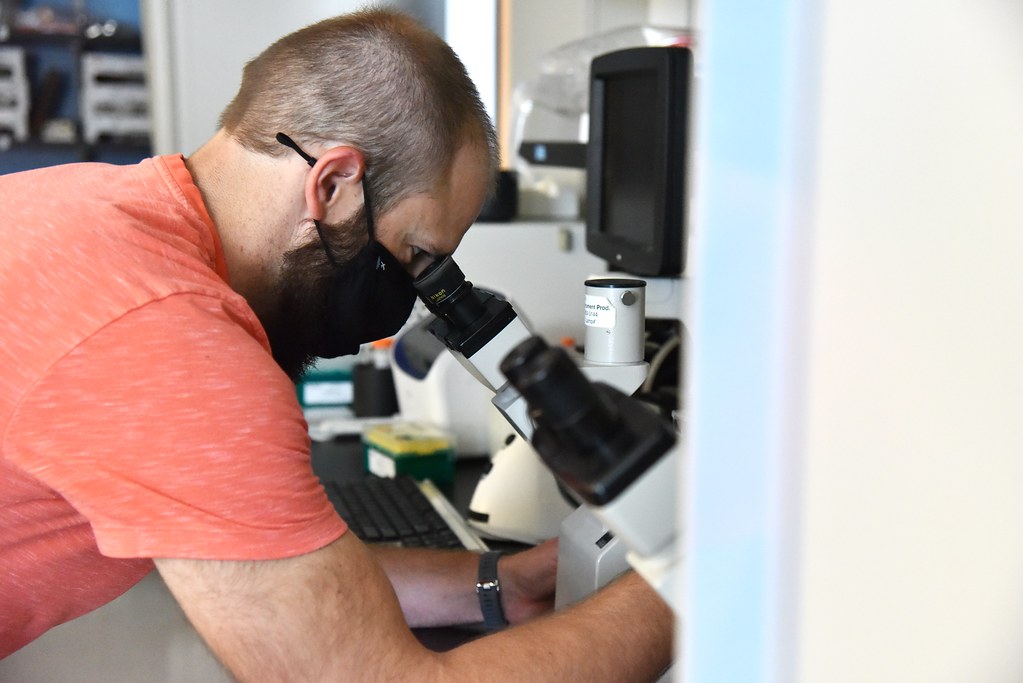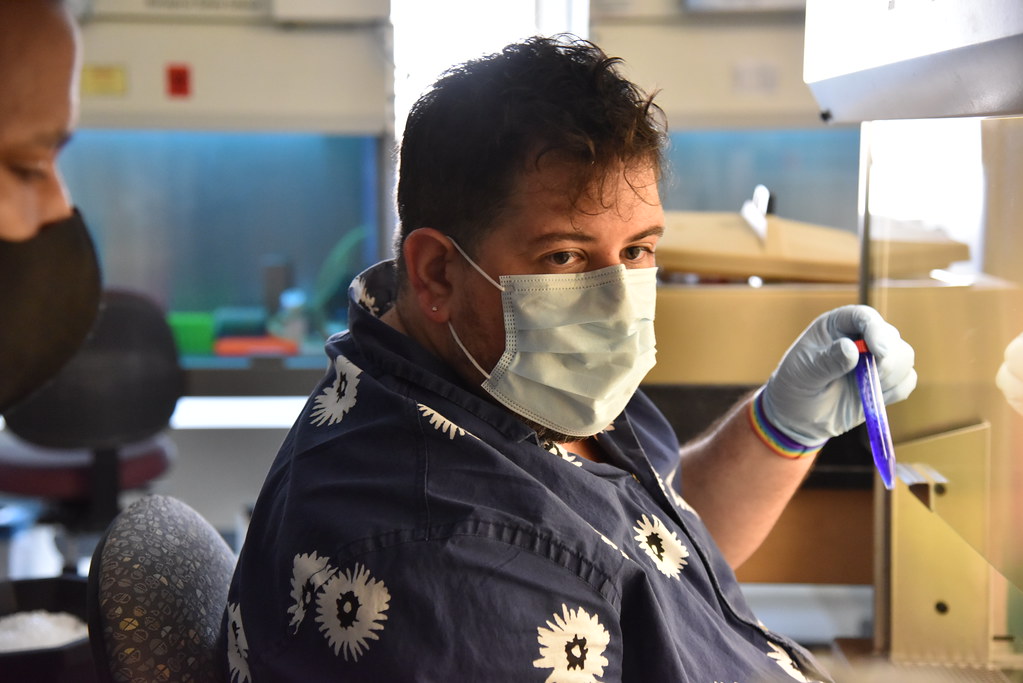Published on
Updated on

By Lauren Hines | Bond LSC
Vaccine development remains a central goal to get the current COVID-19 pandemic under control. While vaccines are highly vital in the fight against the current pandemic, what if scientists could prevent the virus from entering cells altogether? Researchers at Bond Life Sciences Center are working to do just that and, so far, they’re the only ones at Mizzou on the case.
For the Gary Weisman lab, that starts with their study of a family of purinergic receptors which are found on the plasma membrane of cells. Molecules outside the cell bind to receptors and serve as signals to trigger an action, whether it’s transporting something into a cell, alerting its defenses or initiating programmed cell death. The specific receptors they study sound off one of the first alarms to alert host immune cells when a cell is damaged.
Weisman, Bond LSC principal investigator and Curators’ Distinguished Professor of biochemistry, noticed that the spike protein in the virus that causes COVID-19, SARS-CoV-2, shares an amino acid sequence — arginylglycylaspartic acid or RGD — with one of the receptors his lab studies named, P2Y2.
“So, we had this one niche that no one I think has followed,” Weisman said. “Even though people understand RGD sequences are important for protein to protein interactions, and possibly viral entry, no one has looked at this with respect to coronaviruses.”
While ACE2, a plasma membrane receptor, serves as the primary cell-surface receptor for SARS-CoV-2 binding, a potential role for the RGD sequence in the spike protein is to bind to alternate receptors and subsequently enhance viral infectivity.
“We postulated that if there was a way to use our receptor, it might be to block the entry of the virus,” Weisman said. “The virus can’t replicate on its own. It has to get inside the cell to be replicated, so if we prevent the entry, we can potentially stop the infections.”
They found plasma membrane receptors like ACE2 and P2Y2 all share this sequence that binds to other cell-surface receptors called, integrins. The lab is currently exploring ways to block these pathways without blocking other functions.
Few other labs have made this connection because RGD is not known to be present on many of the membrane receptors. In addition, the Weisman lab already has the supplies and connections to study these receptors.
“We, as the lab, have been studying this receptor and this family of receptors for so long that if there is a lab that has the tools and the knowledge to answer this question, I definitely think that is us,” said Kevin Muñoz Forti, Ph.D. candidate for the department of biochemistry.

The lab partners with Kamal Singh, assistant director of the Molecular Interactions Core at Mizzou and associate research professor in the department of veterinary pathobiology, who works with viruses in a way that won’t infect workers.
Singh achieves this by using look-alikes, or pseudovrises, of the spike protein on SARS-CoV-2. To the cell, this mimics the outer shell of SARS-CoV-2, but is not contagious.
Even though the Centers for Disease Control and Prevention and Dr. Anthony Fauci, director of the National Institute of Allergy and Infectious Diseases, expect a vaccine soon, this work is for the long run.
“I can guarantee you this isn’t the last coronavirus that will come up,” Singh said. “There will be many because it has been kind of periodic lately. Coronaviruses have been emerging, so the research done in collaboration with Gary’s lab will definitely be available for… future coronaviruses.”
Coronaviruses are a family of viruses which may cause respiratory illness in humans. The most recent diseases, before COVID-19, caused by previous coronaviruses were Severe Acute Respiratory Syndrome (SARS) from 2002 and Middle East Respiratory Syndrome (MERS) from 2012. Severe Acute Respiratory Syndrome Coronavirus 2 is the virus that causes COVID-19.
“This is the virus that causes COVID-19 or SARS-CoV2,” said Lucas Woods, Weisman research lab manager. “If this type of research were to have been investigated during the first coronavirus epidemic, there might have been some type of lead on the type of work we’re doing… so, absolutely this work will be useful after a vaccine or treatment is available.”
Looking ahead, the study has two years of funding from the American Lung Association in addition to grants from the National Institutes of Health. The Weisman lab hopes to eventually make it to clinical trials, but the road from basic research to clinical trials is long and arduous.
“What’s on our side, at least for the future, is that with some of these pathways we’re looking at, there are already available drugs that target these particular pathways,” Woods said.
These pathway-blocking drugs aren’t approved for humans yet, but this research could facilitate clinical scientists to test the safety of these or related drugs in humans.
The Weisman lab’s research of P2 receptors can be applied to many systems in the body and other diseases. This also allows for more ways to receive grants to fund studies longer. Along with the COVID-19 studies, they study P2 receptors in diseases that affect salivary glands.
Cheikh Seye, Mizzou professor of biochemistry, studies vascular diseases that relate to the receptors studied by the Weisman lab. Seye understands that one of the complications of COVID-19 in humans is vascular related.
“I mean there’s a lot of interaction between the vasculature and other systems, so it doesn’t stay with the salivary gland,” Seye said. “It’s all interconnected, so that’s why we need to have a multi-dimensional approach.”
In addition, the lab has found commonalities between oral and lung epithelial tissue that may contribute to COVID-19.
While this study has quite a bit of potential, it’s a long way away from seeing practical results.
“All the people in the lab have confidence because they have been successful on their own doing this before,” Weisman said. “So, it’s just another challenge, but we know how to get the answers, we have the tools and we’re optimistic that we’ll find out something.”
Researchers working on this study include Gary Weisman, Kamal Singh, Lucas Woods, Cheikh Seye, Jean Camden and Kevin Muñoz Forti.